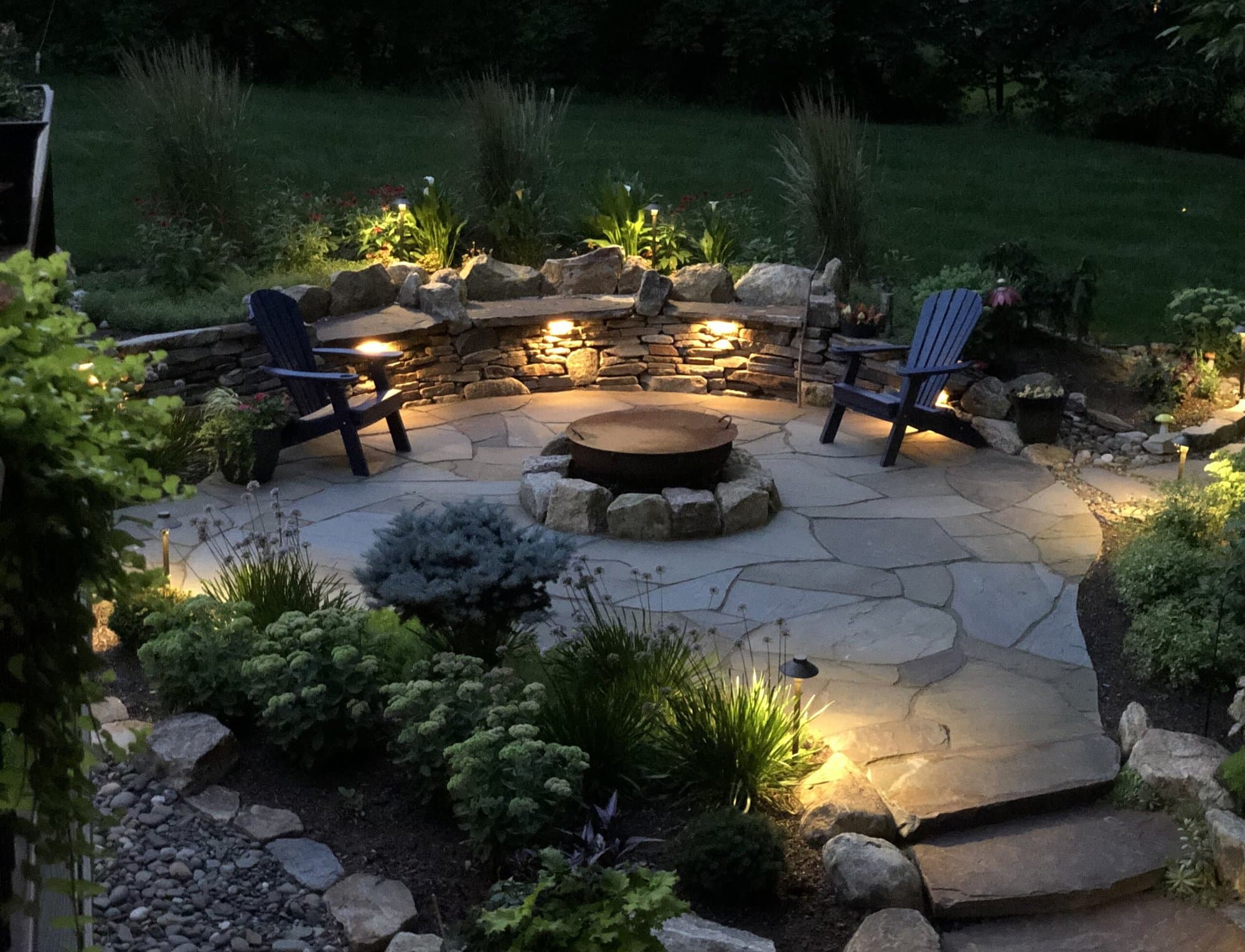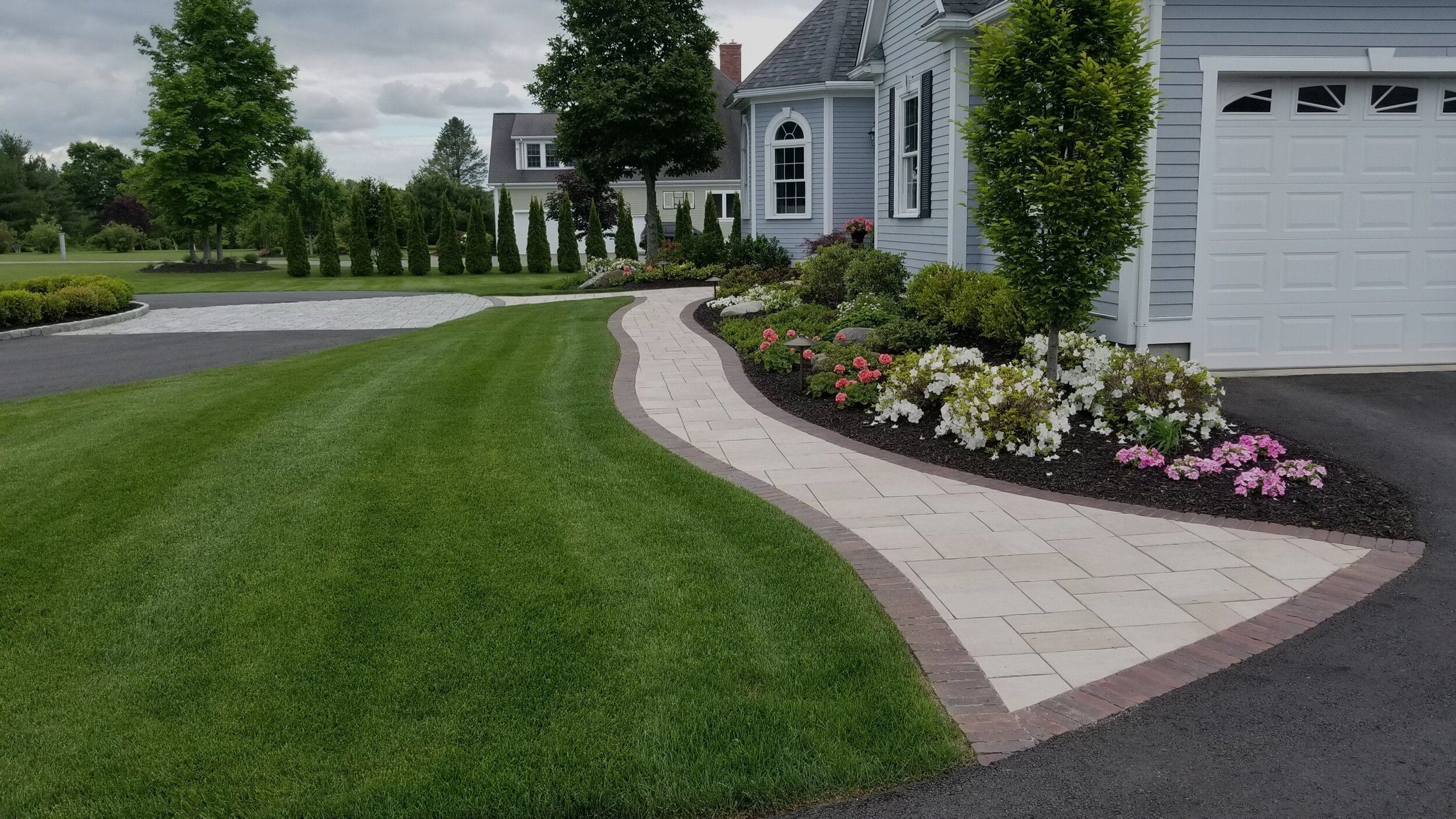Lawn Cleanup Jacksonville: Maintain Your Backyard Pristine with Expert Lawn Care
Elevate Your Residential property's Visual With Sustainable Landscaping Designs and Eco-Friendly Practices

Benefits of Lasting Landscaping
Carrying out sustainable landscaping practices not just preserves natural deposits yet likewise promotes biodiversity and enhances overall environmental health. By picking environmentally friendly landscaping techniques, homeowner can enjoy a wide range of benefits that extend past simply aesthetic appeal. One substantial benefit is the reduction of water consumption via the usage of drought-resistant plants, rain gardens, and reliable watering systems. This not only decreases energy expenses but additionally adds to water conservation efforts in the area.
In addition, sustainable landscape design can enhance dirt health and wellness by reducing using chemical fertilizers and chemicals, thus developing a healthier setting for plant growth and advantageous dirt organisms. This, subsequently, enhances the total durability of the landscape to hold up against environmental stress factors and climate modification impacts - lawn cleanup Jacksonville. Additionally, lasting landscaping techniques can draw in varied wildlife, including pollinators like butterflies and , fostering a more balanced and lively ecosystem within the building
Incorporating Indigenous Plants
To build on the advantages of lasting landscaping, a tactical concentrate on integrating indigenous plants can additionally improve ecological resilience and promote biodiversity within the landscape. Native plants are species that naturally take place in a certain location and have actually evolved to prosper in the regional climate, dirt conditions, and environment. By including indigenous plants in landscape design layouts, homeowner can lower water use, lessen the requirement for chemical pesticides and fertilizers, and support the local wild animals populace.
Integrating native plants also aids in maintaining the special character and identity of an area's vegetation. These plants commonly need less upkeep as soon as developed, making them a economical and sustainable landscape design option in the lengthy run. Furthermore, native plants can bring in indigenous pollinators like butterflies and , adding to the overall health of the ecosystem.
When picking native plants for landscape design jobs, it is vital to select varieties that are appropriate to the specific ecological conditions of the website. Consulting with regional baby rooms or arboretums can give beneficial advice on choosing the appropriate indigenous plants for a specific area. By incorporating indigenous plants right into landscape design layouts, homeowner can develop stunning, lasting exterior spaces that profit both the area and the atmosphere.

Water Preservation Strategies
Reliable watering techniques play a vital function in lasting landscape design techniques, making certain optimum water preservation initiatives in exterior rooms. Implementing techniques such as drip irrigation, rain harvesting, and wise irrigation systems can significantly minimize water waste while preserving a healthy and balanced landscape. Trickle irrigation provides water directly to the origins of plants, reducing evaporation and runoff. Rainwater harvesting involves accumulating rainwater from roofings and saving it for later use in watering, minimizing the reliance on metropolitan water sources. Smart watering systems utilize weather information and soil dampness levels to readjust watering schedules, protecting against overwatering and promoting water efficiency.
In addition to innovative irrigation approaches, xeriscaping is another water-saving landscape design strategy that focuses on making use of drought-resistant plants, mulch, and reliable irrigation to produce a low-water landscape layout - landscaping company Jacksonville. By picking native plants that are appropriate to the local climate and soil problems, homeowner can lower the requirement for too much watering, eventually conserving water and promoting a lasting outdoor atmosphere
Eco-Friendly Hardscaping Concepts
Enhancing outdoor areas with eco-friendly hardscaping features can add substantially to sustainable landscaping techniques. When thinking about hardscaping components, go with products like reclaimed wood, recycled concrete, or natural rock to decrease environmental effect. These materials you could try this out not only include an unique aesthetic interest your outside space but additionally lower the need for brand-new resources removal.
Implementing absorptive paving options such as crushed rock or absorptive concrete can aid lower water drainage and advertise groundwater recharge. These options enable rainwater to seep right into the ground, preventing erosion and reducing the burden on stormwater systems.
Integrating native plants right into hardscaping styles can even more see post enhance eco-friendliness by sustaining regional wildlife and reducing the need for excessive watering or chemical therapies. By including environment-friendly wall surfaces or vertical gardens, you can present a lot more plants into city settings, enhancing air quality and biodiversity.
Including energy-efficient lighting, such as solar-powered LEDs, right into hardscaping styles can lower electrical energy consumption and reduced your property's carbon impact. Prioritizing green hardscaping ideas not just improves the beauty of your exterior space yet likewise shows a dedication to ecological stewardship.
Upkeep Tips for Sustainable Landscapes

Routinely trim plants to promote healthy and balanced development and avoid overgrowth that can bring about pest diseases or invasions. Use organic fertilizers to nurture the soil and plants without unsafe chemicals that can leach into the setting. For hardscaping elements, such as permeable pavers or rock paths, routinely clean them to stop debris accumulation and keep their capability. By staying positive with upkeep jobs, you can preserve the charm and sustainability of your landscape for several years ahead.
Final Thought
To conclude, lasting landscape design practices offer various benefits for homeowner, from improving the visual charm of the environments to advertising ecological preservation. By integrating indigenous plants, carrying out water preservation methods, and using eco-friendly hardscaping concepts, homeowner can develop attractive landscapes that are additionally eco liable. With appropriate maintenance, sustainable landscapes can add and look at this website prosper to a much healthier community for both humans and wildlife.
Furthermore, lasting landscape design can enhance dirt health and wellness by reducing the use of chemical fertilizers and pesticides, therefore developing a much healthier atmosphere for plant growth and useful soil organisms.To construct upon the advantages of sustainable landscaping, a critical emphasis on integrating native plants can further boost eco-friendly durability and promote biodiversity within the landscape. By including indigenous plants in landscape design layouts, building owners can reduce water use, reduce the demand for chemical pesticides and fertilizers, and sustain the regional wild animals population.
These plants often call for less upkeep once developed, making them a affordable and lasting landscaping remedy in the long run. By incorporating native plants right into landscape design styles, property owners can develop gorgeous, lasting outdoor areas that profit both the community and the atmosphere.